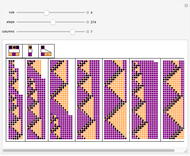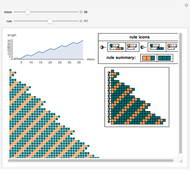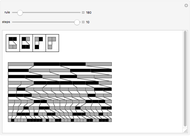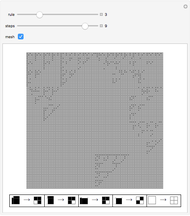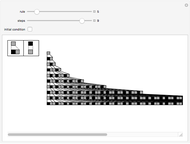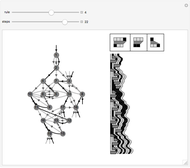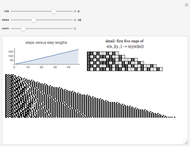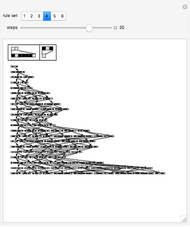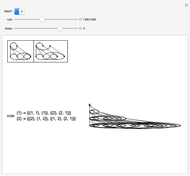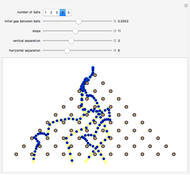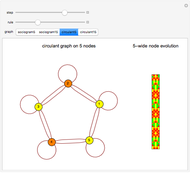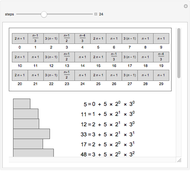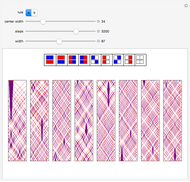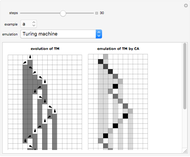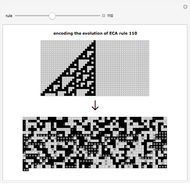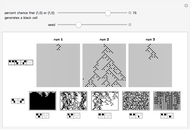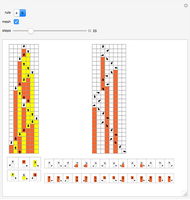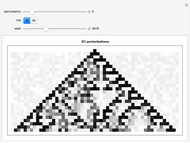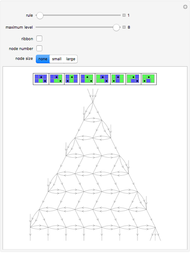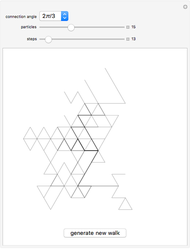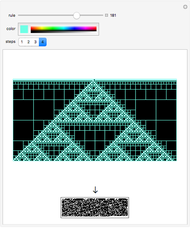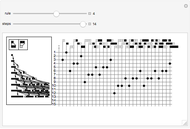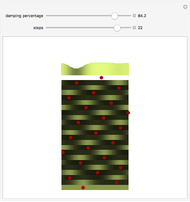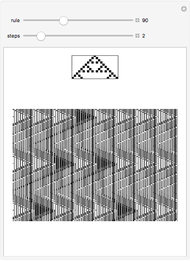Multicolor Neighbor-Dependent Substitution Systems

Requires a Wolfram Notebook System
Interact on desktop, mobile and cloud with the free Wolfram Player or other Wolfram Language products.
The substitution systems in this Demonstration have three or four possible colors for each element. The rules chosen are ones that tend to lead to slow growth in the total number of elements (thus making it easier to display them, since many rules tend to lead to very rapid growth). The assignments are determined by considering the state of the rightmost neighbor of each active cell, as well the state of the active cell itself.
Contributed by: Abigail Nussey (March 2011)
Open content licensed under CC BY-NC-SA
Snapshots
Details
The left-hand evolution shows only the number and color of blocks from step to step, while the right-hand evolution also shows how the rule is being applied at each step. The right-hand evolution is sampled for 13 steps, while the left-hand evolution can be sampled from 5 to 150 steps. The rule icon is shown below the right-hand evolution. The initial condition is shown as the first step of each evolution.
The multicolor neighbor-dependent substitution system is described in S. Wolfram, A New Kind of Science, Champaign, IL: Wolfram Media Inc., 2002 pp. 86-87.
Permanent Citation
"Multicolor Neighbor-Dependent Substitution Systems"
http://demonstrations.wolfram.com/MulticolorNeighborDependentSubstitutionSystems/
Wolfram Demonstrations Project
Published: March 7 2011






